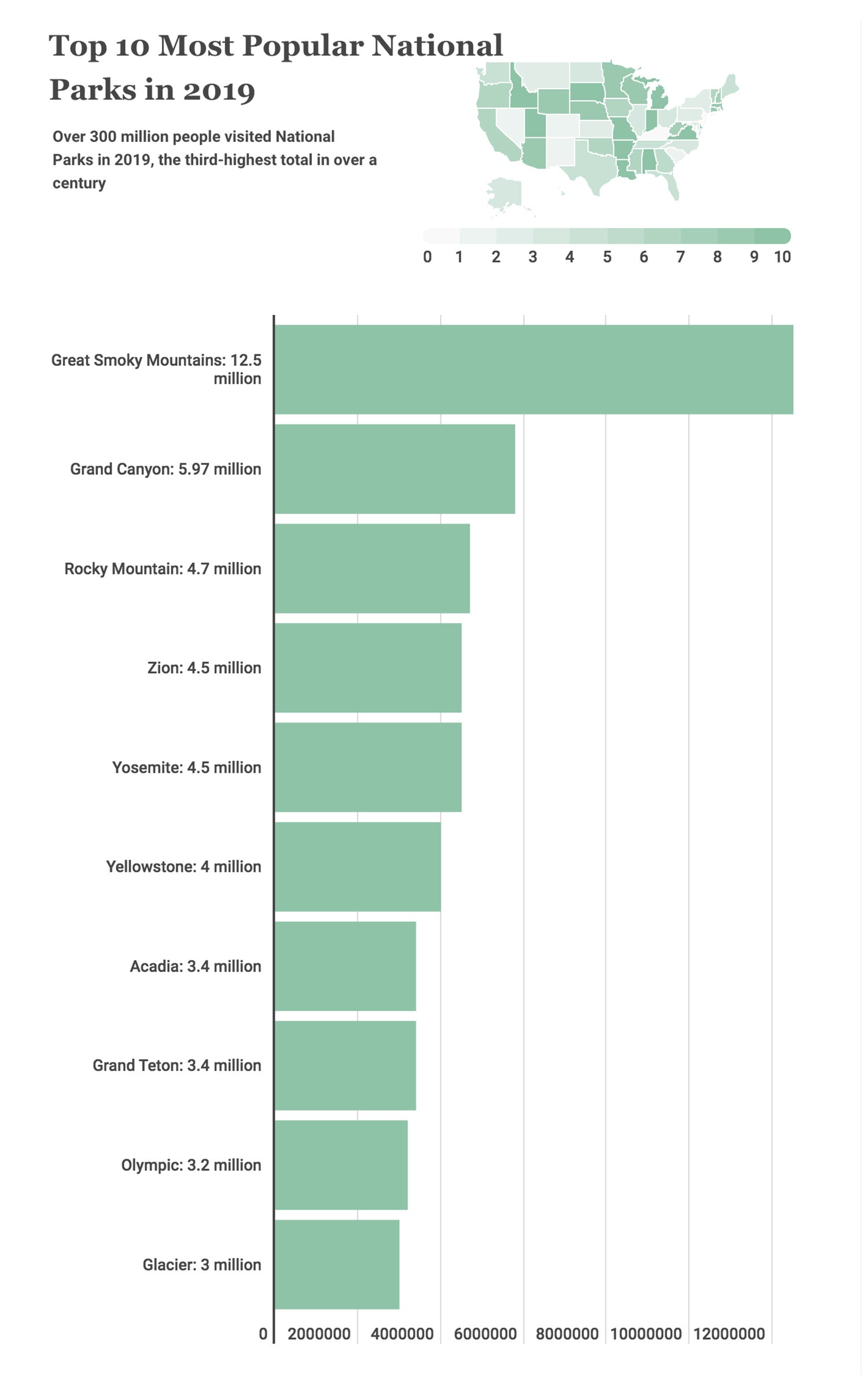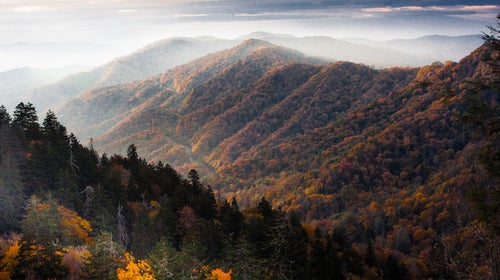For more than a decade, Great Smoky Mountains, Grand Canyon, and Rocky Mountain National Parks have topped the list of most popular in the U.S. Last year proved to be no different.��
The 2019 Department of the Interior , released on February 27, show that Great Smoky Mountains saw 12.5 million visits in 2019, over twice as many as the Grand Canyon’s 5.97 million, which came in a distant second. In total, the national parks system received 327.5 million recreation visits in 2019, a 2.9 percent increase since 2018 and the third highest number since 1904 (topped only by 2016 and 2017—the result of the NPS celebrating its centennial in 2016).��
“The numbers once again affirm that Americans and visitors from around the world love the natural, cultural, and historic experience provided by our national parks,” said secretary of the interior David Bernhardt in a press release.
It’s easy to see what draws people to Great Smoky Mountains. Located on the border of North Carolina and Tennessee, the park is home to more than 850 miles of trails and offers visitors a chance to explore the region’s history and diverse wildlife year-round. The park is also and is only a three-hour drive from major cities like Atlanta, Charlotte, and Nashville. Some of the most popular attractions are driving along the 11-mile and six-mile , fishing for trout in the 2,900 miles of streams, and hiking the eight-mile Charlies Bunion Trail, part of the Appalachian Trail.��
Our other favorite national parks also held their rank. Zion National Park remained in fourth place with 4.49 million, while Yosemite National Park leapfrogged Yellowstone for fifth after recovering from a 2018 drop in visitation due to the Northern California wildfires. Of the top ten, Great Smoky Mountains and Zion have seen the biggest rise in visitors—an almost 25-percent increase over the past 20 years.��

Of the 419 parks within the Department of the Interior, there are 62 designated national parks. The other sites include parkways, memorials, and lakeshores. The in San Francisco took the highest spot of non-national parks, with 15 million visitors last year, while the scenic , which links Shenandoah National Park to Great Smoky Mountains National Park, trailed closely behind, taking second with 14.9 million visitors. In total, 14 parks broke the record they set in 2018.
National park visitor spending contributed more than $40 billion to the U.S. economy in 2019. (The NPS will release a report on the economic benefits of this spending later in the spring.) Yet as more people flood the parks each year, funding for the NPS continues to shrink, from 3.4 billion in 2018 to 2.7 billion in 2020. In its 2017 Long Range Transportation Plan, which addressed concerns of overcrowding, the NPS acknowledged that the need for infrastructure maintenance outweighs its current and predicted funding. In February 2020, the Trump administration proposed a 2021 budget that would cut $581 million to the parks service. In contrast, the NPS currently has a maintenance backlog of almost , which doesn’t include the repairs needed to fix damage caused from last year’s government shutdown.��


